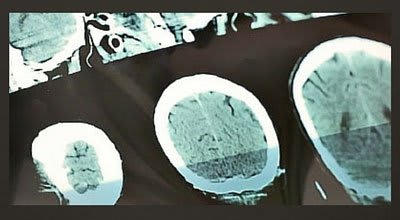Author: Todd S. Miller, MD, chief of neurointerventional service at Stamford Health
Does the word “stroke” conjure an image of someone in their 60s or older? The association isn’t wrong. Most strokes do affect people who are at least 65 years old. But did you know that stroke affects many people who are younger than 65, and that women are at higher risk than men?
Among the various explanations for this increased risk among women and young adults is the tendency to overlook the warning signs of stroke. When women experience symptoms, they may not seek care in a timely fashion and are more likely than men to develop complications.
Young people fall into the same category. We’ve seen young people come in too late for treatment and have devastating outcomes, whereas if they had sought care on time, they would have fared better.
Stroke, which most commonly occurs when a blood clot obstructs blood flow to the brain, starving it of oxygen and quickly killing brain cells, is a leading and largely preventable cause of death and disability in the United States. Symptoms include weakness of the face, arm or leg, on one side of the body; trouble seeing or walking; double vision; slurred speech; and balance and coordination problems.
Spotting these symptoms quickly is crucial to recovery. The acronym: B.E. F.A.S.T. can help you remember (balance, eyes, face drooping, arm weakness, speech difficulty, time to call 911) — to help you. It’s important not to wait if you experience any of these symptoms.
Women, especially Black women, have a higher incidence than men of strokes and stroke deaths, possibly because they live longer, or have particular risk factors, such as pregnancy, preeclampsia (high blood pressure during pregnancy), oral contraceptive use, hormone replacement therapy, migraines with aura, or atrial fibrillation.
Meanwhile, rising incidences of stroke in younger and middle-aged adults may be associated with increasing obesity, high blood pressure, or diabetes. Younger people may not regularly receive health care. Smoking, lack of exercise, and poor nutrition are all risk factors for stroke — and are increasingly common among young adults.
Recent research suggests that the incidence of stroke is declining in older people (those ages 75 and up) while increasing among younger and middle-aged adults. According to analysis of 29 years of data from the Global Disease Burden 2019 study, stroke incidence among adults ages 50 and older has decreased nationwide, since 1990, while rising in adults ages 15 to 49 in certain geographic areas, including Alabama, Arkansas, Minnesota, and North Dakota.
Young people may ignore stroke symptoms not only because they do not recognize their significance, but also do not consider themselves at risk for stroke. Thus, they miss the timely treatment that could prevent severe negative outcomes. On-time treatment must occur within minutes, not hours or days, of the event. The longer one waits, the lower the likelihood that resulting damage will be reversible, but if treated on time, they’re more likely than not to return to normal functioning.
At Stamford Health we are proud to be recognized as a Gold Medal participant in the American Heart Association’s Get With The Guidelines program to encourage high performance among those centers where strokes are treated. In addition we have recently been re-accredited by The Joint Commission as a thrombectomy capable stroke treatment center – the first in the state of Connecticut.
About the Author
Todd S. Miller, MD, is the chief of neurointerventional service at Stamford Health.
Featured Expert/ Author









